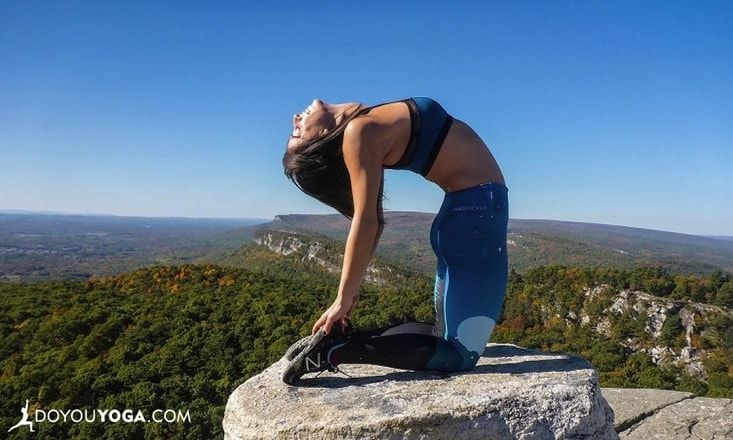Chronic pain can consume your life, debilitating the body and distracting the mind. Multiple studies have shown that a yoga practice can help lessen the effects of chronic pain, reducing muscle stiffness and joint pain, as well as strengthening the body, improving range of motion and flexibility.
Research also suggests that yoga counteracts chronic pain on a neural level, improving the longevity of grey matter in the brain. The researchers found that when yoga practitioners anticipated pain, the parasympathetic nervous system was activated (think the “tend and befriend” response) vs. the sympathetic nervous system (the “fight or flight” response). This indicates that yogis process pain differently than non-yogis. And when practiced mindfully, yoga can help you deal with chronic pain by strengthening the body and the mind.
Yoga may be the last thing you want to do if you’re experiencing pain, so work into a practice with these easy poses. Check with your doctor before starting a yoga practice, and adjust poses to suit your physical and mental needs.
Diaphragmatic Breathing
Our breath has a major effect on our nervous system and mental state. When you breathe deeply with your diaphragm, you calm the nervous system down. This consequently keeps your mind calm, making you better able to deal with the frustration of chronic pain.
To practice, come into a comfortable seated position. Place your hands under the rib cage, and begin to breathe evenly, matching the inhales and the exhales. Close the eyes and breathe for 3-5 minutes, focusing on the sensation of the inhale and exhale.
Savasana with a Body Scan
Savasana or Corpse Pose is the perfect pose to relax and release in. Adding a full body scan helps create awareness of your body and the pain and sensations in it. Begin lying in Savasana, and imagine a white light at the top of your head. Allow this white light to move down the body, highlighting every area slowly and mindfully.
Notice points of discomfort and pain, and imagine the white light entering these areas with your breath. Complete the scan 1-5 times.
Standing Side Stretch
Side stretches are a great way to explore balance in the body, as well as lengthen through the arms, core, and psoas muscle. Begin in Tadasana (Mountain Pose) and reach the hands upward, bringing palms together. Push the hips toward one side, and reach the palm toward the other, stretching the entire side body. Alternate sides, matching your movement with the breath.
Legs Up the Wall
This pose is a great way to support tired feet, and help alleviate low back pain. Let your head rest on a pillow, and bring your bum to the wall. Bring the feet up and allow your body to rest. Focus on your breath and be aware of the sensations in your body.
Supine Twist
This twist is great for the entire back, and also helps to stretch the neck. Begin lying on your back and bring the knees into the chest. Extend one leg out, and gently guide the bent knee to the opposite side, extending the arm out. Gaze upward out toward the extended hand.
Bridge Pose
Setu Bandha Sarvangasana or Bridge pose activates the core and back, providing a good stretch for the quads and chest, and relief for low back pain and menstrual discomfort. Place a block under the low back for additional support.
Warrior II with a Chair
Especially good for knee pain and strengthening the lower body, Virabhadrasana II with a chair is a great way to build strength in a safe and supported way. Begin sitting on a chair, and bring one leg around, pressing the foot into the ground. Extend the other foot to the outside, pressing the side of the foot into the ground. Extend the arms and find your alignment.
Baddha Konasana
Also called Butterfly pose, this asana helps you stretch your knees and hips, and cultivate focus. Find a comfortable seat and bring the soles of the feet together. Use props as needed, placing blocks or blankets under the knees, thighs and sit bones.
Wall Plank
If you have shoulder and elbow pain, a traditional Plank pose may look intimidating and feel uncomfortable. Find a wall and place your palms on it. Keep the feet hip-width apart, and begin to bend the elbows. Try to touch your nose to the wall, then hold it and rise back up.
A consistent yoga practice is a powerful tool to strengthen the body and help you reframe your mentality toward dealing with chronic pain. Adapt poses to your body, your needs, and create and awareness to effectively deal with chronic pain.
Image credit: Dina Ivas










